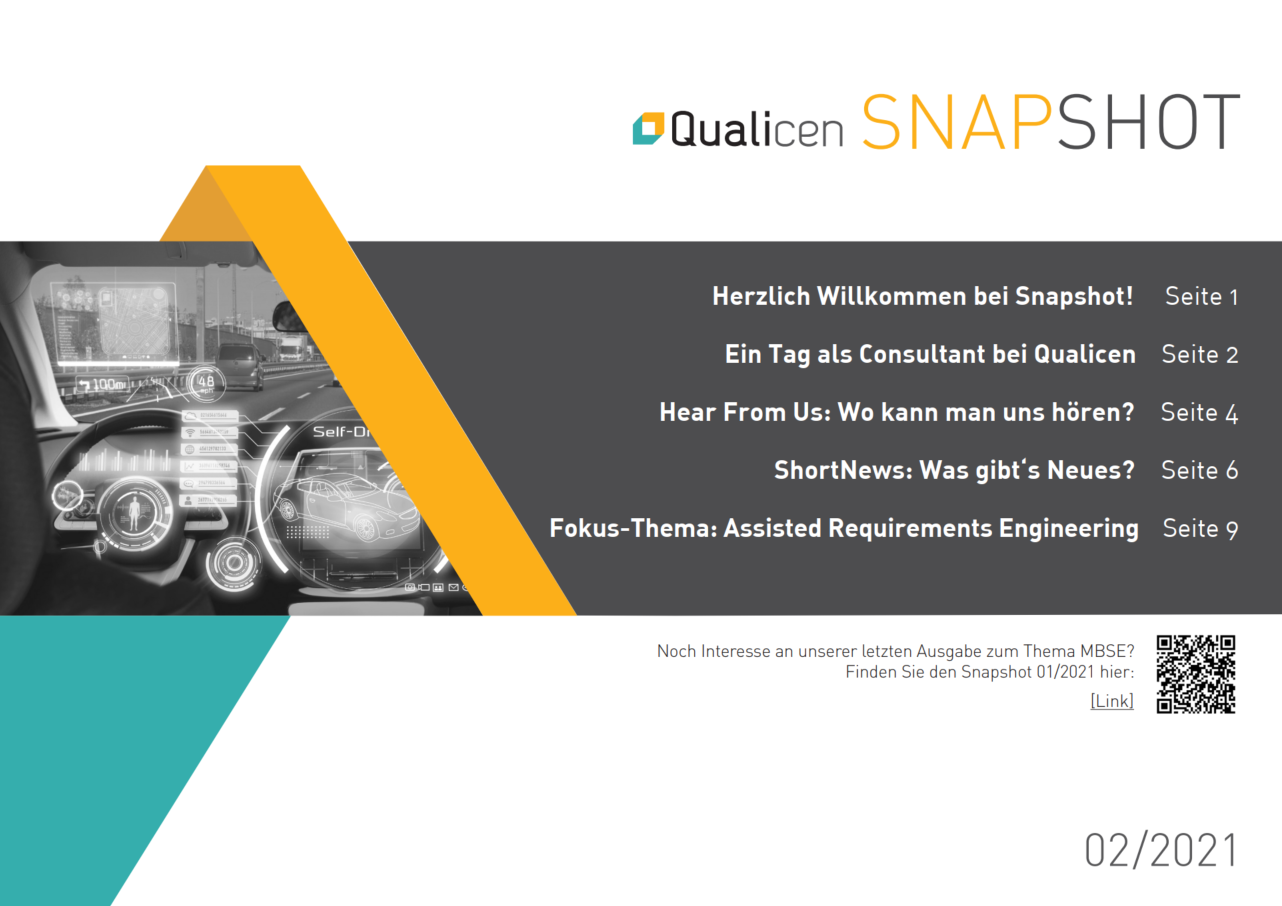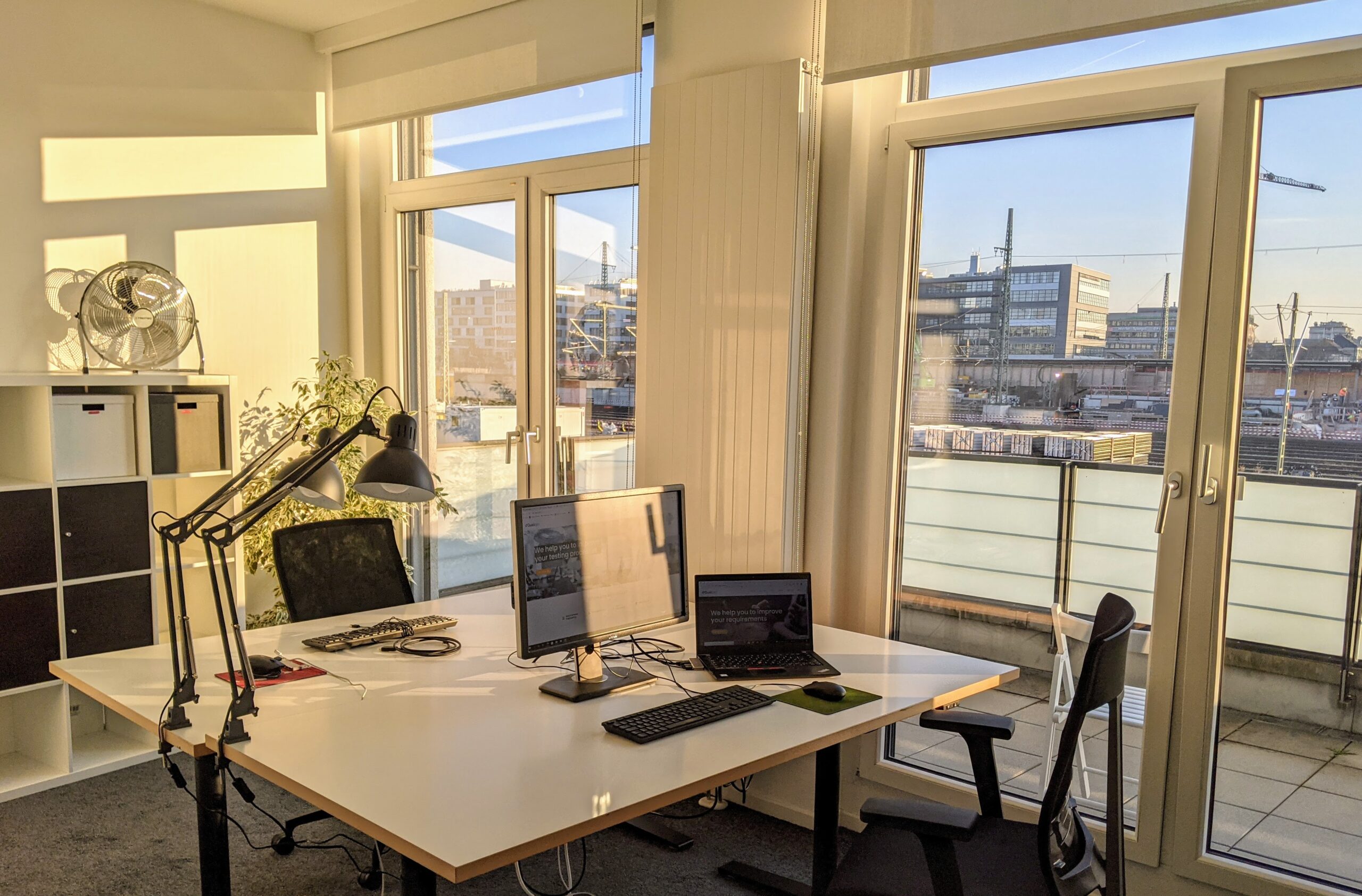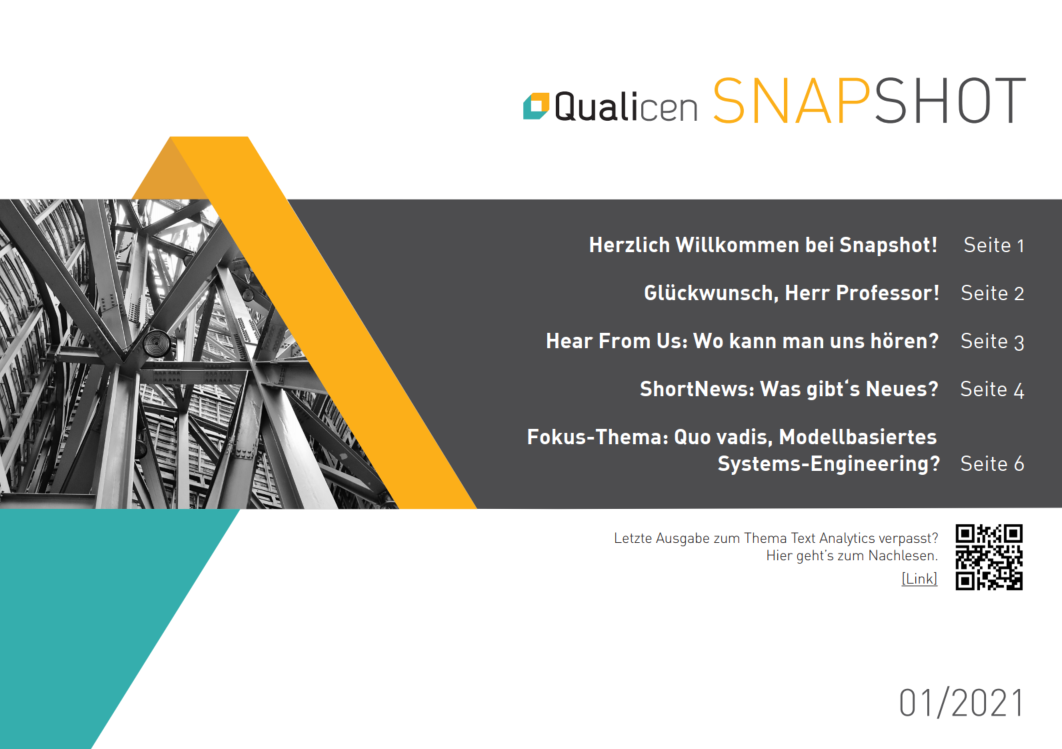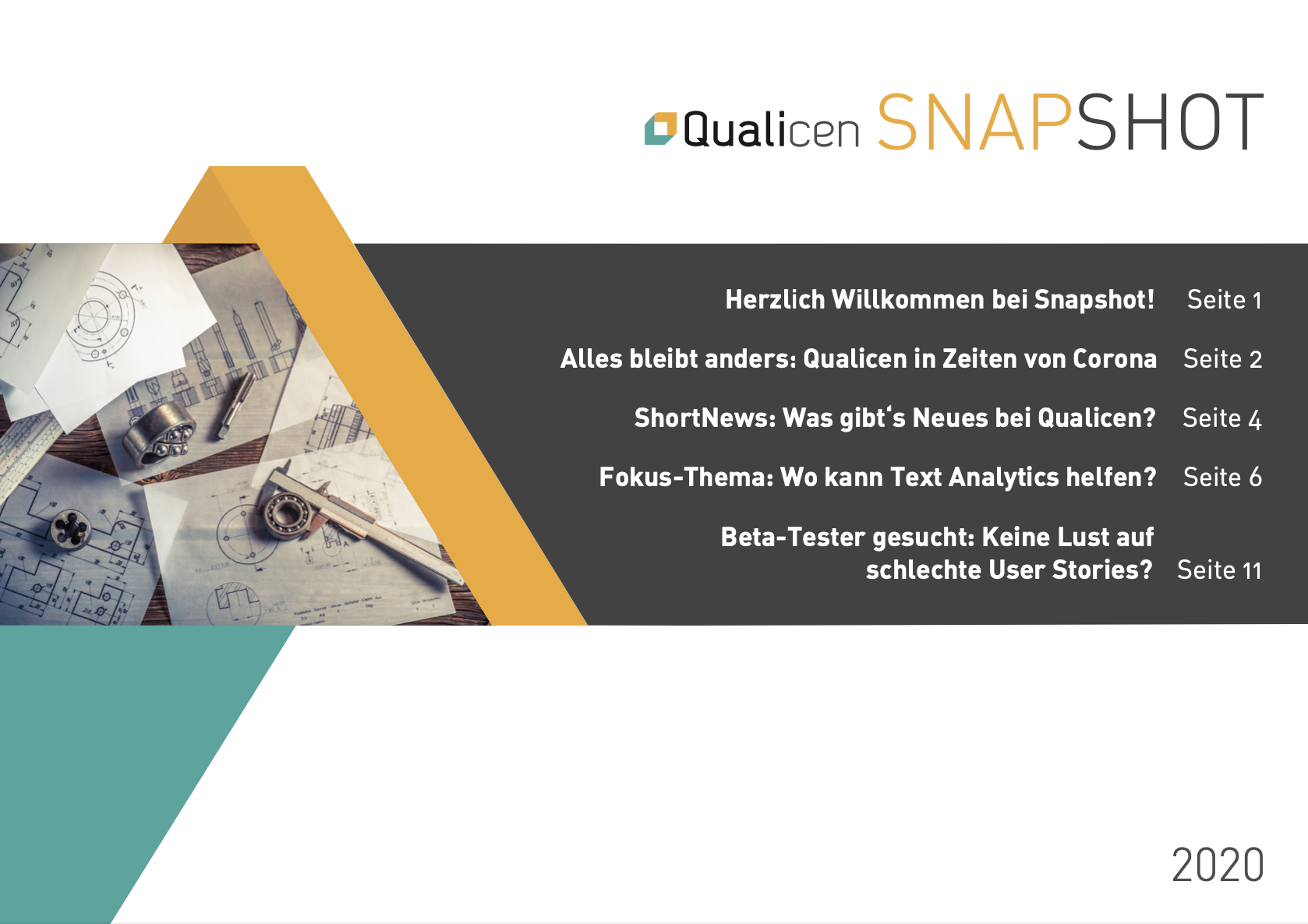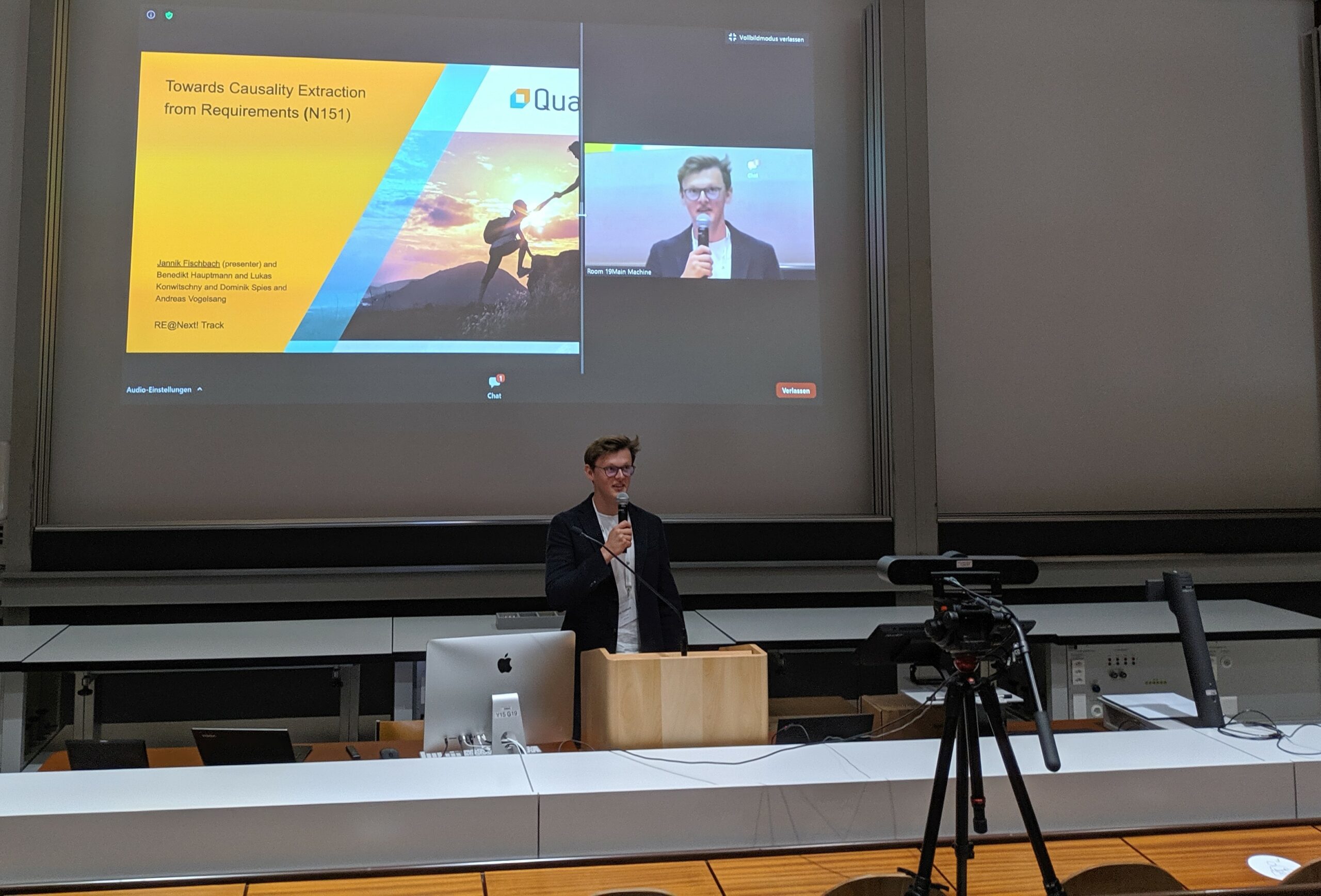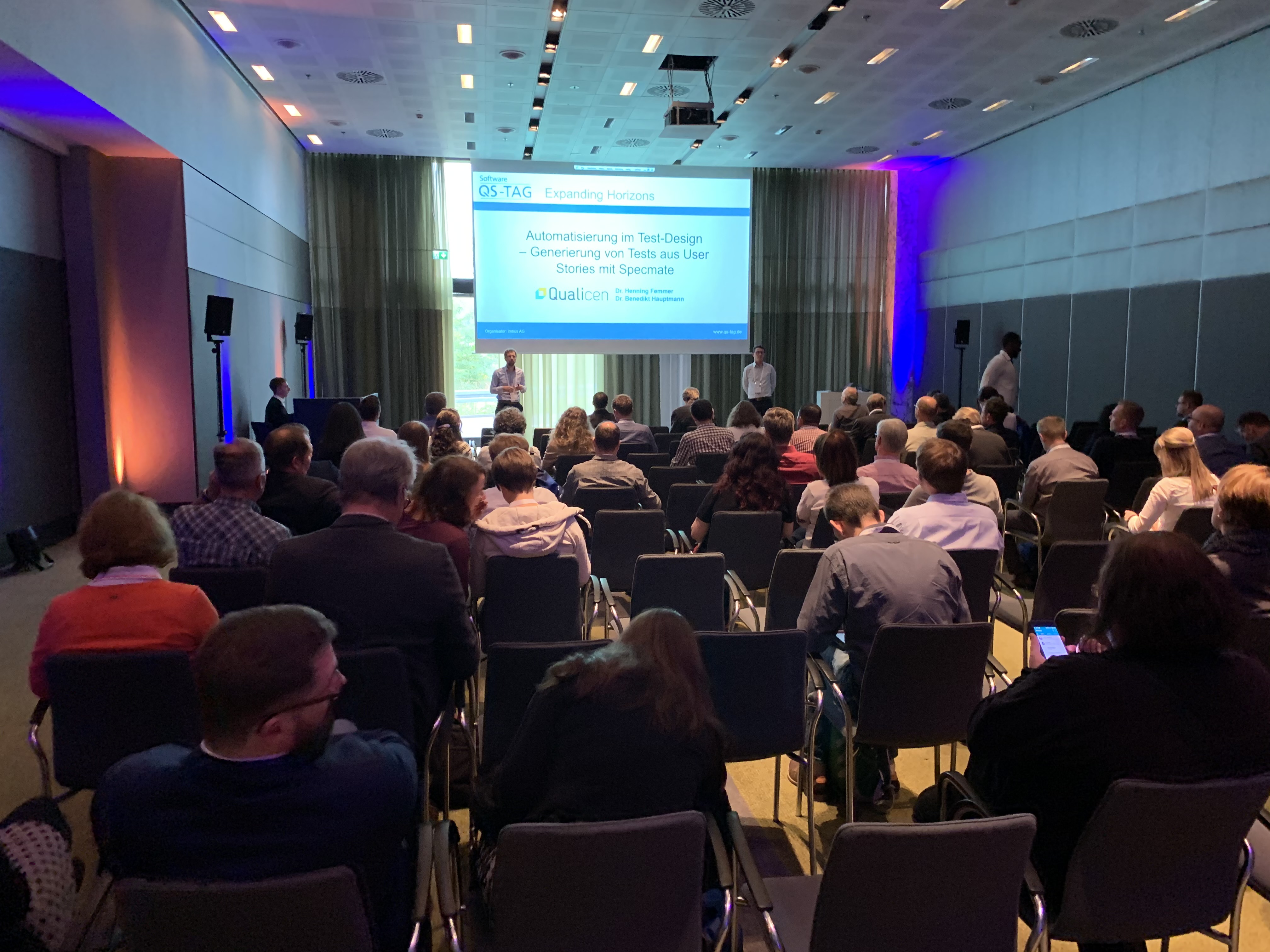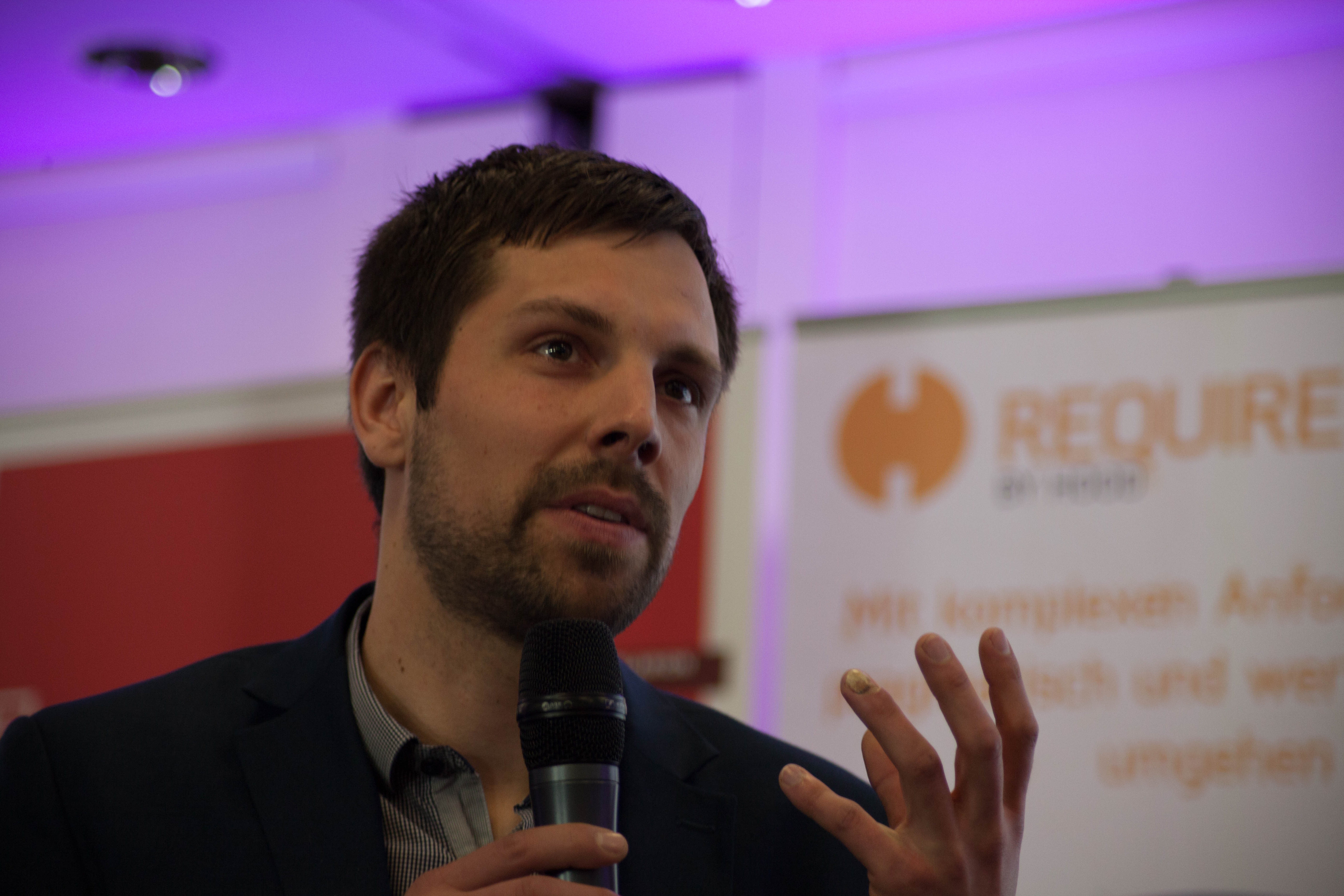Qualicen Snapshot – Ausgabe 2/2021 [in German]
Liebe Freunde und Freundinnen, liebe Partner*innen von Qualicen, das Jahr 2021 neigt sich langsam dem Ende. Hier kommt nun noch rechtzeitig vor den Feiertagen unser neuer Snapshot. Mit diesem Format sind wir im Dezember 2020 gestartet und wollen Sie zweimal im Jahr
Goodbye Garching! Hello Munich!
Start spreading the news, we´re leaving today, we want to be a part of it…Munich, Munich. ;-) Oh no, let´s not mash up this wonderful Frank Sinatra song. But the news are real: We are super exited to announce that
Qualicen Snapshot – Edition 1/2021 [in German]
Liebe Freunde und Freundinnen, liebe Partner*innen von Qualicen, es ist soweit: die zweite Ausgabe unseres Snapshots - die erste im Jahr 2021 - ist fertig. Wir sind im Dezember 2020 mit diesem neuen Format gestartet und möchten uns zuerst noch einmal ganz
Presenting to You: Qualicen Snapshot [in German]
Liebe Freund*innen und Partner*nnen von Qualicen, Langsam schaffen wir es nicht mehr uns mit allen Kontakten regelmäßig persönlich auszutauschen. Und manche/r scheut vielleicht die Hürde uns einfach mal auf die neuesten Entwicklungen anzusprechen. Und auch nicht jede/r hat die Zeit unseren Updates
Happy Birthday, Qualicen!
Five years? Really? Time must have been flying! Did you know the idea of founding Qualicen originated at Technical University Munich? Can you guess for how many years the founders already know each other and where they actually met first?
Research in times of Corona
Corona influences pretty much all areas of our lives by now - both privately and professionally. This year, Corona also had a significant impact on my doctoral studies, about which I would like to report in the following blog post. In
Conference Report: QS-Tag Frankfurt
[caption id="attachment_9293" align="aligncenter" width="300"] Benedikt and Henning at our booth[/caption]
Last week, we were at QS-Tag in Frankfurt, Germany. QS-Tag is a great venue for testers and everyone else who is into Quality in Software Engineering. This year's topic was Expanding Horizons, but the actual topic was AI and Automation. We were present in two talks and I was invited to a panel discussion on the future of AI in Testing. Here are our key takeaways again:
Benedikt and Henning at our booth[/caption]
Last week, we were at QS-Tag in Frankfurt, Germany. QS-Tag is a great venue for testers and everyone else who is into Quality in Software Engineering. This year's topic was Expanding Horizons, but the actual topic was AI and Automation. We were present in two talks and I was invited to a panel discussion on the future of AI in Testing. Here are our key takeaways again:
Conference Report: RE Conference (JeJu Island, South Korea)
Since this is my first blog article, I would like to take the opportunity to introduce myself. My name is Jannik Fischbach and I started my PhD in the middle of May this year. I am dealing with test automation
Hear us speak at REConf 2018
Falls Ihr/Sie nächste Woche in München seid, kann man fast gar nicht über die REConf 2018 laufen ohne uns zu begegnen:
Keynote: "Vom Design Thinking zum Requirements Engineering: Vom Warum und Wieso zum Was und Wie"
Prof. Dr. h.c. Manfred Broy wird am Dienstag um 9 Uhr die Eröffnungs-Keynote zum Thema Design Thinking und RE halten: Requirements Engineering ist vielleicht der wichtigste Teil der Software-Evolution. Falls es uns nicht gelingt, die Funktionalität, die der Endnutzer benötigt, korrekt zu spezifizieren, und falls es uns nicht gelingt, die geforderte Qualität korrekt zu identifizieren, besteht die Gefahr, dass ein System entwickelt wird, das nur teilweise oder vielleicht sogar völlig nutzlos ist. Im Prinzip gibt es zwei wichtige Schritte im Prozess des Requirements Engineerings. Die größte Herausforderung ist, die benötigte Funktionalität zu finden. Das ist eine schwierige Aufgabe und Techniken wie Design Thinking können hier helfen. Design Thinking ist ganz darauf ausgerichtet, Lösungen für Probleme zu finden und diese durch die Konstruktion eines Prototyps konkret zu machen. Dies ist ein kreativer Prozess, um Ideen zu entwickeln, wie die richtige Funktionalität eines Softwaresystems ausschauen könnte. Jedoch, wenn ein Prototyp vorliegt, ist man noch weit entfernt davon, einen guten Satz von Anforderungen zu besitzen. Deshalb ist es notwendig, eine Brücke zu finden von den Resultaten des Design Thinking-Prozesses zum Requirements Engineering, um alle Details einer Anforderungsspezifikation auszuarbeiten. Dieser Prozess ist beeinflusst von dem gewählten Entwicklungsmodell, wie etwa agiles oder konventionelles dokumentationsorientiertes Vorgehen. Design Thinking und Requirements Engineering ergänzen sich perfekt, um die kreative Identifikation der Funktionalität und der detaillierten Beschreibung der Funktionen, aber auch der Qualität von softwareintensiven Systemen sicher zu stellen.
Moving in at GATE Garching (with Pictures!)
As most of you know, we moved to the GATE in Garching (a university town, 20 minutes out of Munich) recently. So in oder to celebrate our new offices, I wanted to share a few pictures from these days with you. We moved here in December. Engineers as we are, we loved all the assembling! And not too many things broke, actually ;) [gallery size="large" ids="451,450,459"]


